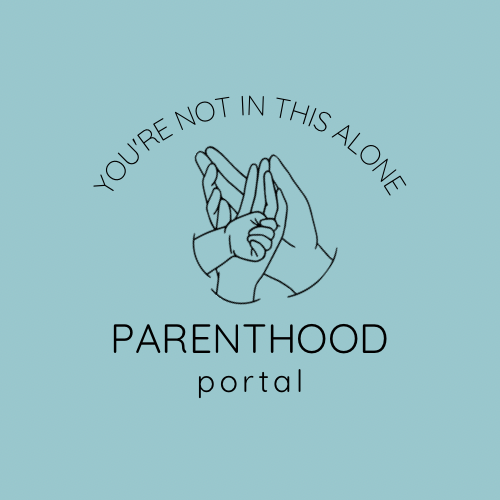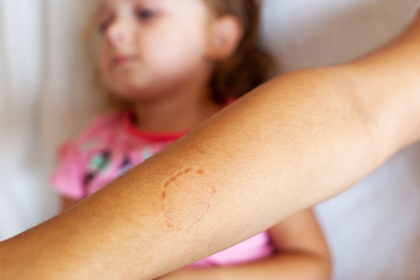As your little one grows older, they will start eating solid foods. Let’s learn about different ways of introducing solids, such as baby led weaning, purees, or combination feeding, as well as the pros and cons of each.
What is Baby Led Weaning?
Baby led weaning is a method of introducing solid foods, where finger foods baby can feed themself are offered, and purées are often skipped, opting for whole food options.
Pros of Baby Led Weaning
- Saving Time and Money
- Without the need to purchase additional purées or cereals, it is easy to adapt your current food budget to support your little one starting solids, as well as not needing to spend time preparing different foods specifically for baby.
- Easier to Eat as a Family
- With baby eating what the rest of the family is eating, it is super simple to add your newest family member to the family mealtime. Some foods need to be cut or prepared slightly different, but most foods will be served just as they are when other family members eat them.
- Reducing Likelihood of Picky Eating
- When a child is introduced to a different variety of foods in different textures, it prepares them for trying different things that they may not be used to. Introduce new foods in a non-judgemental way without your personal bias and see how your little one responds.
Cons of Baby Led Weaning
- Mealtimes Can Get Messy
- As baby feeds themself it’s easy for them to throw stuff on the floor or smear it all over their face. If you have pets around your child may try to give them food. Also, a child could throw food off their tray to experiment with cause and effect.
- Difficult to know how much baby is getting in their mouth
- Unless you are watching each bite a baby makes and how much gets spit out after each bite, it is hard to tell how much of the food that disappears of of the baby’s tray actually gets eaten.
- More food waste
- As a baby tries new things, they may just squish or swish food around, and not eat much. This can cause food to be wasted and thrown in the trash.
Other Options
The Traditional form of weaning is considered to be offering cereals first, followed by orange or green vegetables, followed by fruits, offering one new food at a time. Around the age of 9-12 months solid food is introduced after being successful at purées for some time. There is also the combination method of introducing solids. This is where a parent will offer both solid foods and purées. This may take place during the same meal, or alternate between the different options depending on the meal.

Pros of Traditional Weaning
- Cleaner at Mealtimes
- When feeding your child it is easy to control how much of a mess is made, and to just offer them a little on a spoon at a time
- Easier to Know How Much Baby is Consuming
- When eating purée out of a container it is easy to see just how much your little one is eating. It is also easy to tell when they spit it back out as well. You can offer smaller portions or different flavors at one time, or choose a premixed variety
- Less Food Waste
- Due to only feeding baby what you spoon into their mouth, you do not end up with much food that baby doesn’t eat, or throw on the ground.
Cons of Traditional Weaning
- Need to Transition to Table Food Between 9-12 Months
- Eventually your child will need to be eating whole foods. This method just prolongs the process, and adds another step in the way.
- Harder to Include Baby in Mealtime
- When one parent is focused on feeding purées to their child, they then in turn miss out on the cohesive family meal experience. This can often lead to parents eating at different times, and not having a feeling of connection at meal time.
- Can Be Expensive
- When you buy multiple types of purées on top of your normal grocery list, it can really add up. A child will typically eat between half and a full container every meal, so over time this can add up to $1-$3 per meal.
- May Increase Picky Eating
- When a child is not introduced to different textures early on, they may become comfortable with only what they have tried thus far. Usually it isn’t as easy to expose to different food experiences while purée feeding.
Pros of Combination Feeding
- Can Fill In Nutrition Gaps
- If a child is not choosing to eat certain foods or textures, you can offer those foods in purée form to see if your child responds any better. When including such a wide variety of food options, it is easy to meet your child’s nutritional needs.
- Teaches Self Feeding Skills
- When choosing to feed Baby purées, you can have the child feed themself. This drastically changes the experience with the purées, and makes it a self sufficiency task for the child. When doing this the child is able to better detect their hunger cues and preferences.
- Able to Be Flexible
- If a caregiver is watching your child and is more comfortable with one form of feeding over the other, it is easy for you and your family to adapt to whichever is easiest. There may be times where one option is the better choice, or more convenient.
- Easy to Have a Wide Variety of Food
- Some foods may not be in season, or may be harder to prepare. If that food is available in purée form it can make it easier to have a food exposure with that food item, and serve foods that you may not prepare for yourself.
Cons of Combination Feeding
- Can Be More Time Consuming or Messy
- When offering both purées and solid foods in the same meal, it will of course take longer due to being a duplicate process. It may become messier if the child gets bored, or is trying too big of a variety of foods.
- I always recommend these silicone bibs when starting any feeding journey, it makes it easy to catch food, and they are simple to empty into the garbage or rinse into the garbage disposal in the sink.
- Harder to Keep Track
- When you are switching between different forms of feeding, you may lose track which foods you have tried. There are apps you can get to track this information. Some apps may be more geared towards one method or another.
- Meal Times are Less Predictable
- If your child gets in their high chair and doesn’t know if purée or solid food is coming their way they may get irritable at meal times, or have strong preference one way or another. Children thrive off of routine, so no matter which method(s) you try, try your best to include routine!
Final Thoughts
No Matter which way you choose to feed your child, they will benefit from it!! What is most important is what you are comfortable with, and what will create the best routine and association with food for your child! Baby Lead Weaning, Traditional Weaning, or Combination Feeding are each no better than the other. It is all about how you use these methods to create positive food experiences for your child.
For more information on Baby Lead Weaning:
For information from the CDC and AAP about signs of readiness for foods and other tips:
Check out my previous article!




